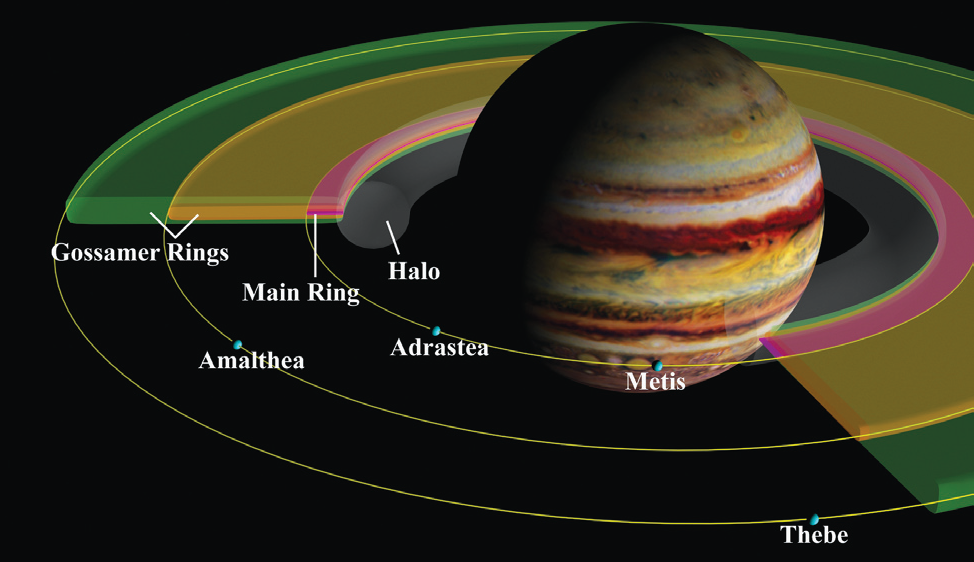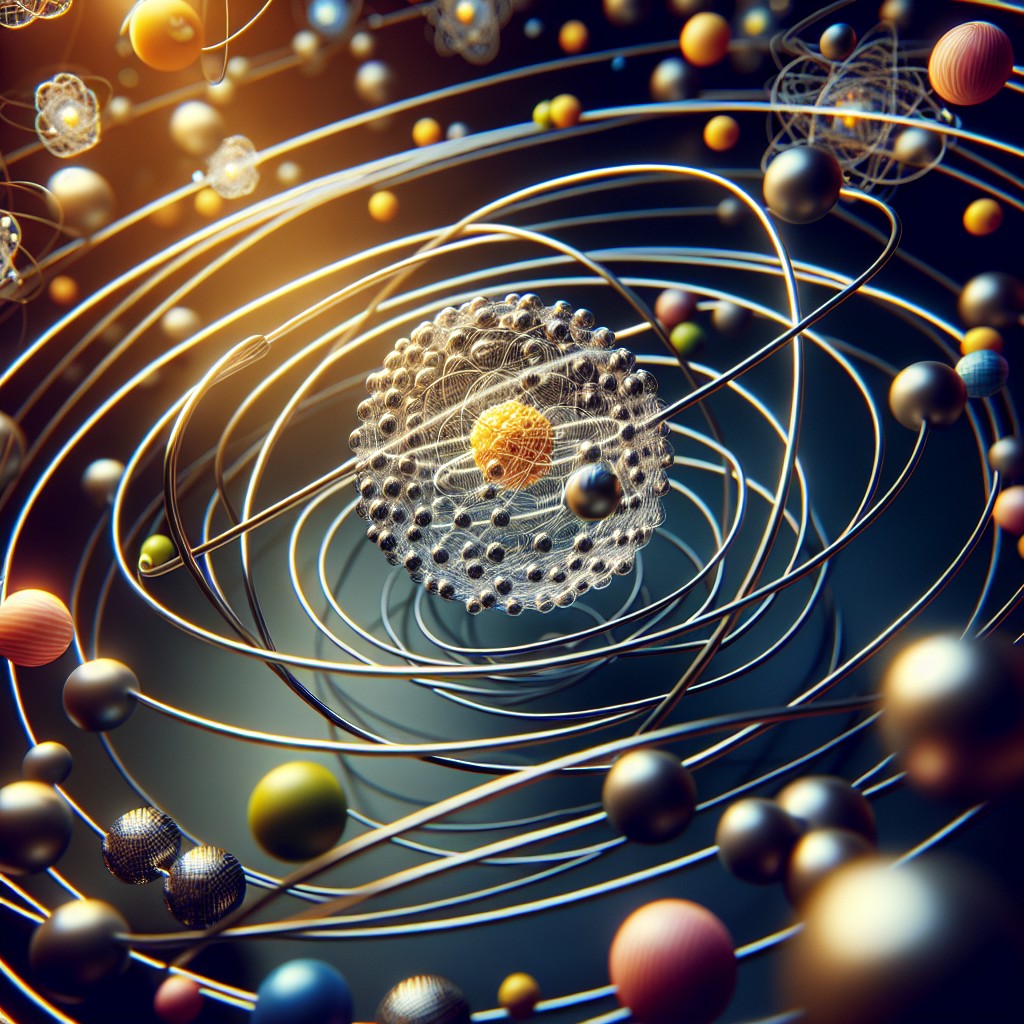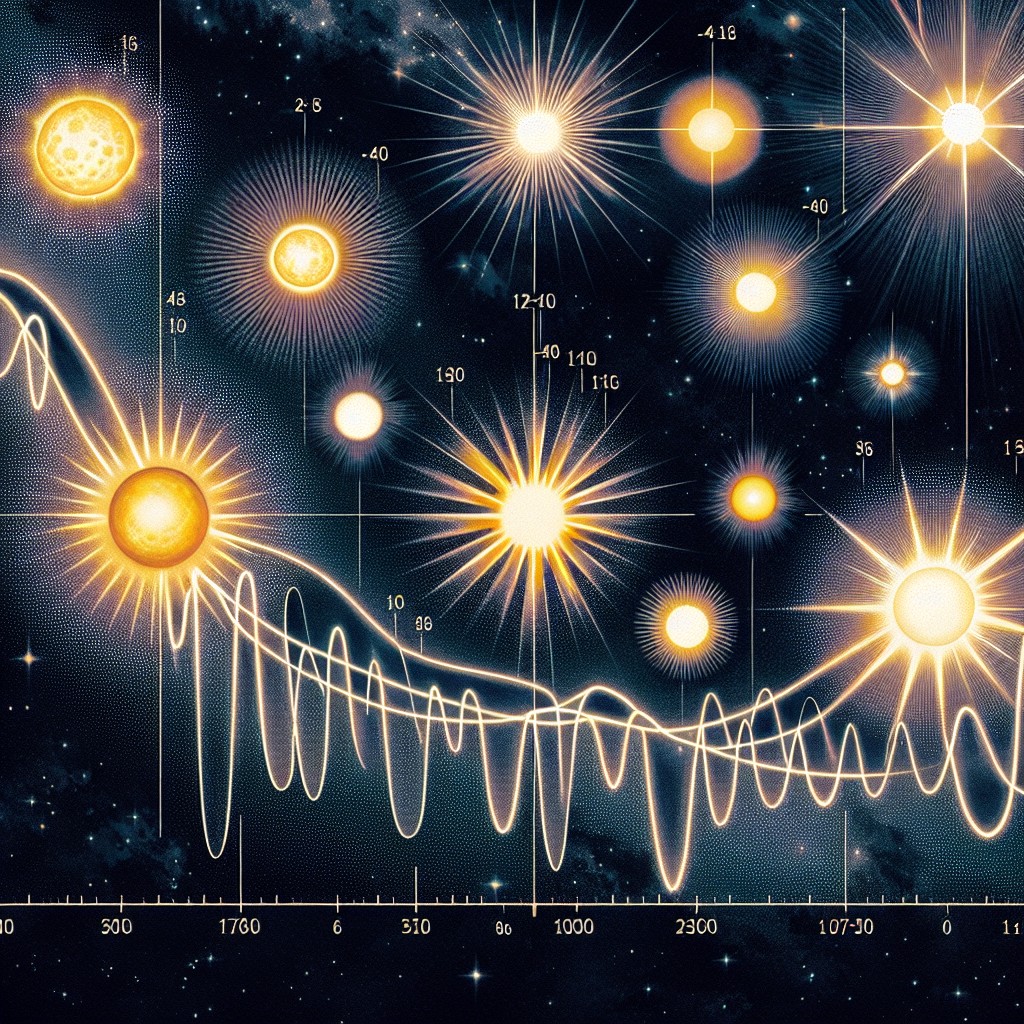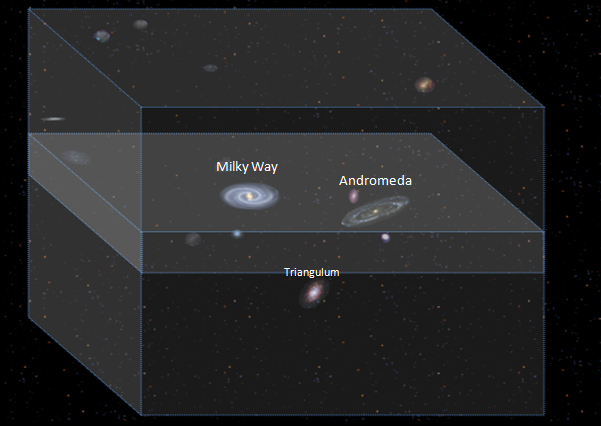Planet Jupiter is 2.5 times more massive than all the other planets in our solar system combined, and is believed to have the largest moon system with 67 moons.
Overview of Planet Jupiter
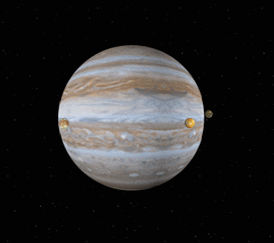 Jupiter is named after the King of the roman gods for very good reason. It is not only the largest planet but its magnetosphere is the largest object in the solar system. Jupiter and Saturn have the largest moon systems in the entire solar system Jupiter is known to have at least 67 moon as of 2015 while Saturn is currently known to have at least 62 but more are being discovered all the time.
Jupiter is named after the King of the roman gods for very good reason. It is not only the largest planet but its magnetosphere is the largest object in the solar system. Jupiter and Saturn have the largest moon systems in the entire solar system Jupiter is known to have at least 67 moon as of 2015 while Saturn is currently known to have at least 62 but more are being discovered all the time.
Planet Jupiter is 2.5 times more massive than all the other planets in our solar system combined.
If Jupiter had become 80 times more massive it would have collapsed in on itself due to the immense gravity. This immense pressure would have started a thermonuclear reaction, turning Jupiter into a star.
Formation of Planet Jupiter
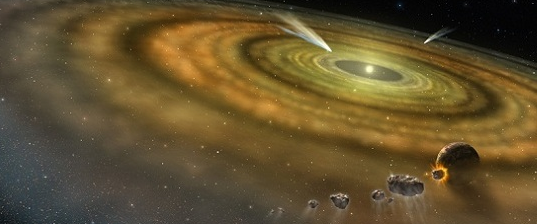
When the solar system was forming and left over material from the sun began to form the planets, moons and other bodies in our solar system. One planet in particular got more than 90% of that matter; this planet is the gas giant we call Jupiter.
Stars form when gas clouds begin to clump together and this clump draws in more of the gas through the gravity it projects. At some point during the stars creation the gas cloud becomes a disk of matter and, once the star is formed in the centre, the planets begin to form from clumps in the disk.
There are different theories as to how the gas giants, Jupiter and Saturn, form. One model suggests that solid rock clumps creating the core which draws in huge amounts of gas. While another suggests that the gas clumps and forms the planet in a single process.
The true answer as to the formation is not currently known but the primary mission of NASA’s Juno spacecraft (see below) is to find the answer to how gas giants are formed. Juno is due to reach Jupiter later this year so watch this space.
Layers of Jupiter
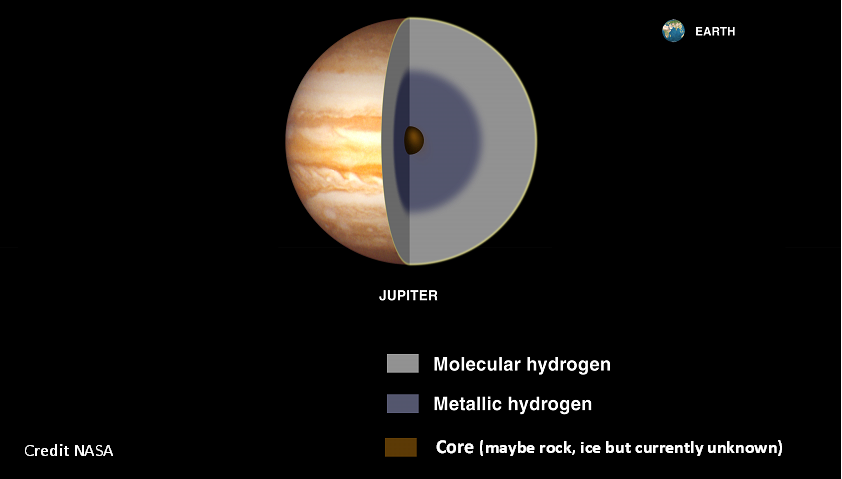
Jupiter is mainly made of Hydrogen and Helium, like our sun, and due to the immense pressures Jupiter’s huge mass creates the Hydrogen can be found in liquid form below the surface atmosphere. Further into the structure of Jupiter, as the pressure and temperatures increase, the hydrogen becomes metallic and it is here that Jupiter’s magnetosphere is generated. It is believed that at the centre of Jupiter there may be a rocky planet similar in size to Earth although this and many other questions about Jupiter will be answered when NASA’s Juno spacecraft reaches the gas giant in July of 2016.
Jupiter’s Magnetosphere
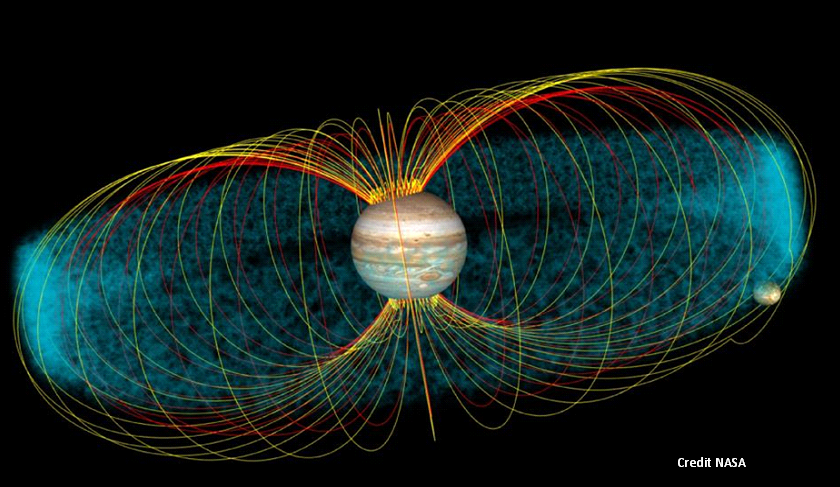
Jupiter’s magnetosphere, like Earth’s, is created by the spin of the planet and the metallic layer in its structure. Jupiter’s magnetosphere is about than Earth’s 20,000 times stronger than Earth’s and stretches about 1 billion kilometres (600 million miles) almost reaching Saturn’s orbit. If visible it would appear to be 3 times the size of the sun or moon from the Earth’s surface.
Earth’s magnetosphere protects us from solar storms and harmful solar radiation while Jupiter’s magnetosphere has trapped radiation within it engulfing its many moons in harmful radiation.
Jupiter’s Rings
Image credit: NASA
Jupiter has got one large ring which can be divided into five segments. Closest to Jupiter’s surface is called the ‘Halo ring’ and is approximately 10,000km thick, next is called the ‘Main Ring’ at approximately 100km thick. The next sections is called the ‘Inner Gossamer Ring’ and is 2,600km thick, then the ‘Outer Gossamer Ring’ at 8,800km thick and finally the ‘Faint Outer Ring’ at 8,800km thick.
Weather on Jupiter
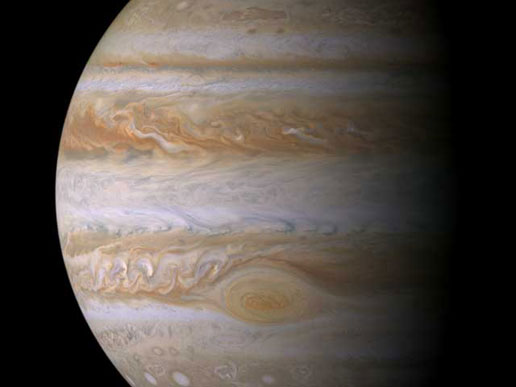
The giant red spot or Eye on Jupiter is a giant storm system that travels around Jupiter’s surface, just below the equator, making a revolution once every 6 days. It has been observed for over 300 years and is three times wider than planet Earth. There are many storms on Jupiter, as well as the ‘great red spot’ there is also a ‘Little red spot’ which has been observed giving birth to three smaller storms recently.
The dark brown/red bands that can be seen are formed of warmer gases that are falling and are actually slightly lower in the atmosphere than the lighter coloured clouds. These lighter coloured clouds are cooler areas of gas and when the two come into contact with each other they form great, turbulent storms.
Juno
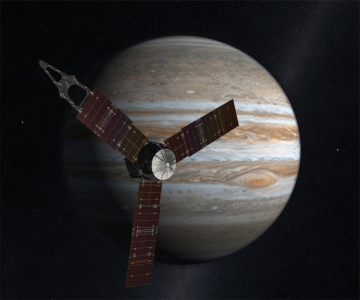
Although a lot is known about Jupiter many of its secrets are hidden deep within its thick layer of stormy gas clouds. Deep beneath the surface, scientists hope to uncover the mysteries of Jupiter’s interior including the true cause of the storms.
In order to unlock these and many other secrets about the gas giant, NASA has sent a space craft called Juno which has been especially designed to carry out this mission and overcome the harsh conditions such as extreme temperatures and intense radiation.
On the 5th of August 2011 an Atlas V 551 Rocket was launched with the space craft Juno as the payload. The Rocket is a single use craft whose only role is to get the Juno into low earth orbit. From there Juno travelled on a flight path around the sun beyond the orbit of mars, back around Earth. Using our gravity to shoot it off towards Jupiter (which it should intercept and begin its orbit on the 5th of July 2016). From there it will use its on-board equipment to scan the planet relaying all the information back to Earth.
Where in the Solar System?
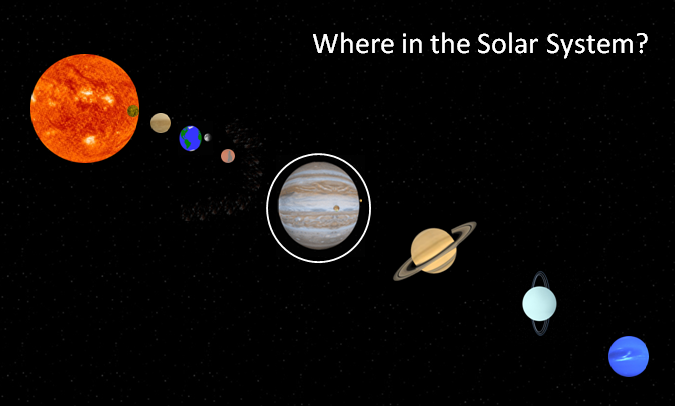
|
67 |
|
|
Rings |
1 |
|
Orbit period |
483.68 million Earth Days |
|
Rotation Period |
9.92 hours |
|
Equatorial Radius |
71,492 km (44,423 miles) |
|
Overall Density |
1.33 g/cm3 |
|
Mass (Earth = 1) |
317.82 |
|
Gravity (Earth = 1) |
2.36 |
|
Temperature |
-148°C (-234°F or 125 °K) |
Real Time Data
Data was correct at the time the page was loaded. If you require an update hit F5 on your keyboard to refresh the page.
